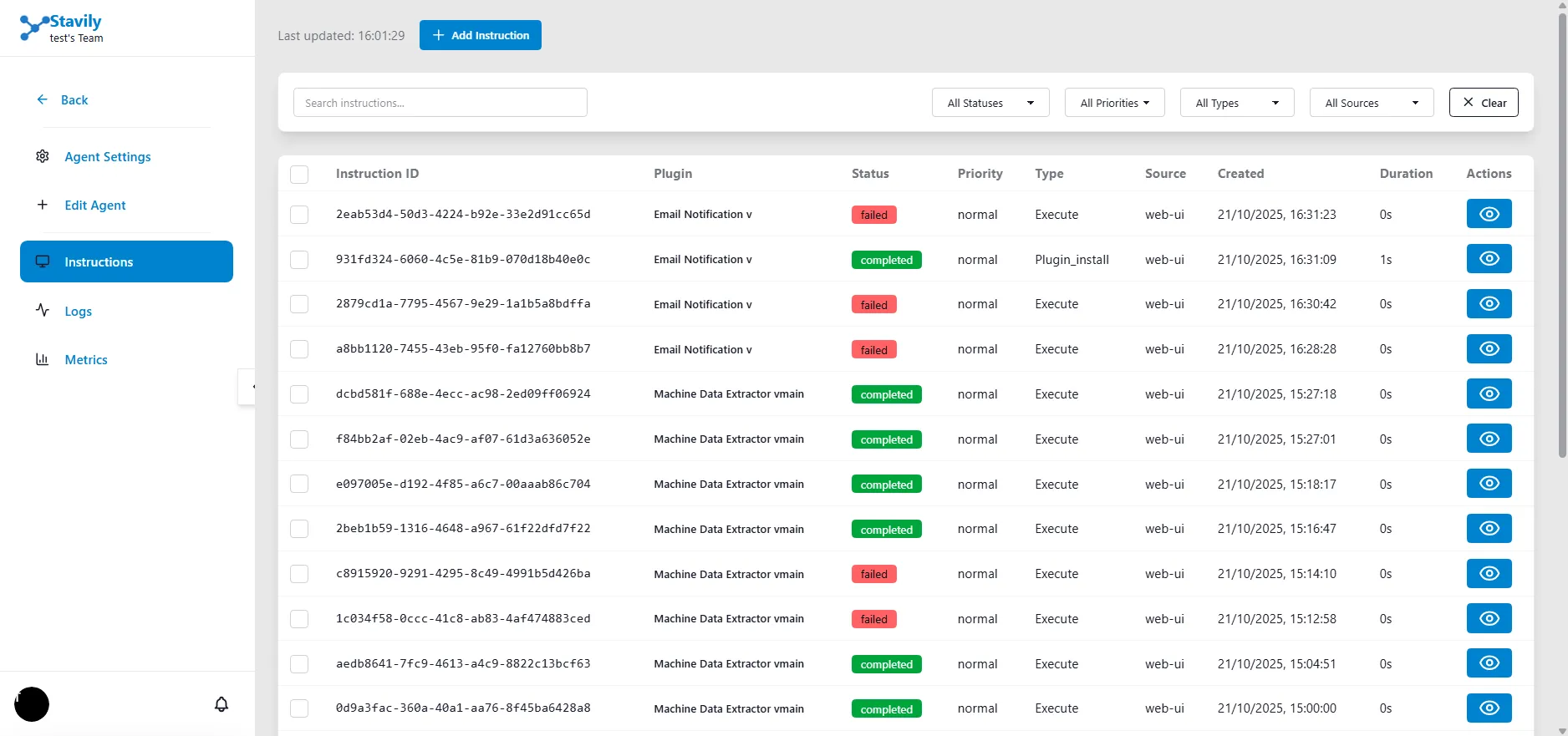REST API
Standard HTTP endpoints for CRUD operations on workflows, agents, and configurations. Provides reliable, stateless communication for data management.
The Web UI serves as the user-facing layer that interacts with multiple backend systems to provide a unified experience. It communicates with the Orchestrator, agents, and external services through various protocols and APIs.
The Web UI acts as the central hub connecting users to the entire Stavily ecosystem, providing seamless communication between frontend and backend components while maintaining real-time synchronization and robust error handling.
The Web UI primarily interacts with the Orchestrator through REST APIs and WebSocket connections for real-time data.
REST API
Standard HTTP endpoints for CRUD operations on workflows, agents, and configurations. Provides reliable, stateless communication for data management.
WebSocket
Real-time bidirectional communication for live updates and monitoring. Enables instant notifications and live data streaming.
GraphQL
Efficient data fetching with reduced over-fetching for complex queries. Allows clients to request exactly the data they need.
flowchart TD
A[Web UI] --> B[Orchestrator API Gateway]
B --> C[Workflow Service]
B --> D[Agent Service]
B --> E[Plugin Service]
B --> F[Authentication Service]
A --> G[WebSocket Server]
G --> H[Real-time Updates]
G --> I[Live Monitoring]
G --> J[Event Streaming]
While agents don’t communicate directly with the Web UI, the UI manages agent operations through the Orchestrator.

sequenceDiagram
participant U as User
participant W as Web UI
participant O as Orchestrator
participant DB as Database
U->>W: Create Workflow
W->>W: Validate Input
W->>O: Submit Workflow
O->>O: Process & Validate
O->>DB: Store Workflow
DB->>O: Confirmation
O->>W: Success Response
W->>U: Workflow Created
flowchart LR
A[Agent] --> B[Orchestrator]
B --> C[WebSocket Server]
C --> D[Web UI Client]
D --> E[User Dashboard]
F[Workflow Execution] --> B
G[Plugin Updates] --> B
H[System Events] --> B
Direct integration with the plugin ecosystem for discovery and management.
flowchart TD
A[Web UI] --> B[Plugin Marketplace API]
B --> C[Plugin Registry]
C --> D[Git Repositories]
C --> E[Plugin Metadata]
A --> F[Plugin Installation]
F --> G[Orchestrator]
G --> H[Agent Deployment]
The Web UI manages complex state for user interactions and real-time data.
mindmap
root((State Management))
User State
Authentication
Profile
Preferences
Application State
Workflows
Agents
Plugins
UI State
Navigation
Modals
Forms
Real-time State
Live Updates
Notifications
Monitoring
Multi-layered security for all interactions.
flowchart TD
A[User Login] --> B[JWT Token]
B --> C[API Requests]
C --> D[Token Validation]
D --> E[Permission Check]
E --> F[Resource Access]
G[WebSocket] --> H[Token Auth]
H --> I[Session Validation]
I --> J[Real-time Access]
Comprehensive security measures for data handling.
Multiple caching layers for optimal performance.
Browser Cache
HTTP caching headers and service worker caching.
API Cache
Redis-based caching for frequently accessed data.
CDN
Global content delivery for static assets.
Comprehensive monitoring of system interactions.
flowchart LR
A[Web UI] --> B[Performance Metrics]
A --> C[Error Tracking]
A --> D[User Analytics]
B --> E[Monitoring Dashboard]
C --> F[Alert System]
D --> G[Usage Insights]
Maintains functionality during system issues.